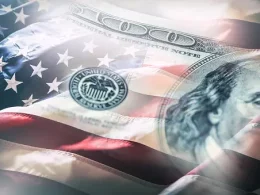Financial literacy education has grown into a critical component of modern life. With the ever-changing financial landscape and the increasing complexity of personal and global finance, understanding basic financial concepts has never been more important. This article explores the evolution of financial literacy education, from its early beginnings to its present-day status as a vital life skill. We will examine key milestones in the history of financial education, analyze its current state, and consider the future of this essential discipline.
Introduction to Financial Literacy Education
Financial literacy education refers to the process of teaching individuals the skills and knowledge they need to make informed decisions about managing money, investments, credit, and debt. In today’s fast-paced and complex financial world, understanding the basics of budgeting, saving, and investing is vital for economic security and long-term success.
 Image by https://img.freepik.com
Image by https://img.freepik.com
The need for financial literacy is evident in nearly every facet of life, from personal finance and retirement planning to navigating student loans and mortgages. Financial literacy empowers individuals to make informed decisions, avoid financial pitfalls, and create a pathway to financial stability.
Early Beginnings of Financial Literacy Education
Historically, financial literacy education was informal and limited to basic teachings passed down through families or small communities. Money management was not a primary focus in schools or public education systems until much later in history. Early lessons often revolved around practical skills such as balancing checkbooks or saving for basic needs, without formalized instruction in personal finance.
In the early 20th century, the rapid industrialization and urbanization led to a shift in economic life, moving from rural, self-sustained economies to more complex, cash-based systems. This increased the need for individuals to understand formal financial systems, leading to the first calls for financial literacy education.
The Expansion of Financial Literacy in the 20th Century
The expansion of public education in the early to mid-20th century brought with it the inclusion of subjects related to home economics, where basic financial management skills were taught, particularly to women. These classes included lessons on budgeting, savings, and sometimes insurance. However, the broader focus on comprehensive financial literacy education was still absent.
The Great Depression in the 1930s played a significant role in highlighting the importance of financial education. Many families faced financial ruin due to a lack of understanding about saving, investing, and the risks associated with borrowing money. In response, the federal government began efforts to improve financial literacy, primarily through public campaigns aimed at encouraging savings and responsible spending.
During World War II, the U.S. saw further efforts to encourage financial literacy with initiatives like war bonds and thrift programs. These programs aimed to instill a sense of financial responsibility and savings habits in the general population.
The financial crisis of 2008 marked a major turning point in the development of financial literacy education. The global economic collapse underscored the urgent need for individuals to better understand mortgage products, debt, and the overall economic system. In response, financial literacy programs and mandates started to emerge across school curriculums in various countries, including the U.S., Canada, and the U.K. Today, many schools have integrated personal finance courses into their curriculum, and online financial education platforms have proliferated.
Current State of Financial Literacy Education
Financial literacy education today is a recognized necessity for ensuring individual financial well-being. In many countries, financial education has been incorporated into formal schooling, beginning as early as elementary school in some regions. Non-governmental organizations, financial institutions, and governments alike have taken up the mantle of financial literacy education, offering a wide array of resources.
In the U.S., the Financial Literacy and Education Commission (FLEC) promotes financial literacy through public-private partnerships, helping citizens to access educational tools. Similarly, organizations such as Junior Achievement and the National Endowment for Financial Education (NEFE) provide comprehensive resources to educate both adults and young people about personal finance.
Despite the efforts, gaps remain. Many individuals still struggle with managing personal debt, understanding investment options, or planning for retirement. Financial literacy rates vary widely by age, income, and geographical location, with low-income households often having the least access to financial education.
Challenges Facing Financial Literacy Education
Despite the increased focus on financial literacy, challenges persist. One major obstacle is the lack of standardized financial education in schools. While some regions require financial education as part of the curriculum, others still do not prioritize it. Additionally, the content and quality of financial education can vary widely, with some programs focusing more on theory rather than practical, real-world application.
Another challenge is the accessibility of financial education for adults. While there are many online resources, courses, and workshops, reaching those who need it most can be difficult. Many adults may not seek out financial literacy programs due to a lack of time, motivation, or knowledge about available resources.
Furthermore, financial products themselves have become increasingly complex. With the advent of digital banking, cryptocurrencies, and new investment platforms, keeping financial literacy education up-to-date with these rapidly changing products and services is a continuing challenge.
Future Trends in Financial Literacy Education
Looking forward, several trends point toward the future of financial literacy education. With the growth of fintech and online financial services, digital platforms are playing a larger role in educating consumers. Interactive apps and platforms, such as budgeting tools, investing simulators, and online financial education courses, are making financial literacy more accessible to a broader audience.
Additionally, governments and private organizations are increasingly advocating for making financial education a mandatory part of the school curriculum worldwide. As more countries adopt such policies, the next generation will have a stronger foundation in personal finance.
Moreover, as global financial systems continue to evolve, so too will the need for continuous financial education throughout adulthood. Lifelong financial education may become the norm, with resources evolving to meet the needs of different life stages—from starting a career to planning for retirement.
Comparative Table: Financial Literacy Education – Past vs Present
| Aspect | Past | Present |
|---|---|---|
| Focus | Basic money management skills | Comprehensive personal finance, debt, investing, and retirement planning |
| Medium | Informal (families, communities) | Formalized (schools, online platforms, workshops) |
| Reach | Limited to certain groups (e.g., women) | Widely accessible to all age groups and demographics |
| Government Involvement | Minimal | Significant, with many countries adopting financial literacy programs |
| Complexity of Products | Simple (cash, savings, basic loans) | Complex (credit cards, student loans, digital finance, investment products) |
| Globalization Impact | Low | High, with digital finance and global markets increasing importance |
Analysis Table: Key Milestones in Financial Literacy Education
| Year/Period | Milestone | Impact |
|---|---|---|
| Early 20th Century | Introduction of home economics in schools | Basic financial management taught in formal education for the first time |
| 1930s | Great Depression | Government campaigns focused on savings and financial responsibility |
| 1990s | Rise of credit cards and student loans | Increased demand for personal finance education |
| 2008 | Global financial crisis | Accelerated integration of financial literacy in school curriculums |
| 2020s | Digital financial tools and platforms | Increased accessibility of financial literacy through technology |
Conclusion
The evolution of financial literacy education reflects the growing complexity of the financial world and the increasing need for individuals to manage their personal finances effectively. From informal teachings passed down through families to formalized curriculums in schools, financial literacy has become a critical life skill. While challenges remain, including disparities in access and the rapid pace of financial product development, the future looks promising with the growth of digital tools and global efforts to make financial literacy education a universal right.












